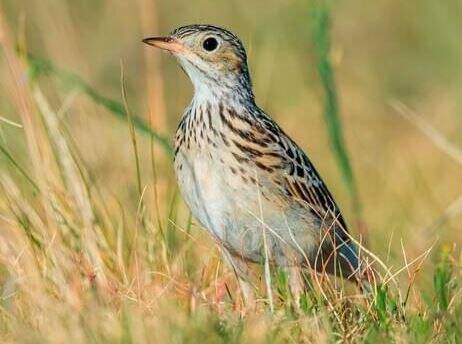Conservancy launches ‘bold, unprecedented’ plan to protect massive Prairie grasslands area southeast of Brandon
Advertisement
Read this article for free:
or
Already have an account? Log in here »
To continue reading, please subscribe:
Monthly Digital Subscription
$1 per week for 24 weeks*
- Enjoy unlimited reading on winnipegfreepress.com
- Read the E-Edition, our digital replica newspaper
- Access News Break, our award-winning app
- Play interactive puzzles
*Billed as $4.00 plus GST every four weeks. After 24 weeks, price increases to the regular rate of $19.00 plus GST every four weeks. Offer available to new and qualified returning subscribers only. Cancel any time.
Monthly Digital Subscription
$4.75/week*
- Enjoy unlimited reading on winnipegfreepress.com
- Read the E-Edition, our digital replica newspaper
- Access News Break, our award-winning app
- Play interactive puzzles
*Billed as $19 plus GST every four weeks. Cancel any time.
To continue reading, please subscribe:
Add Free Press access to your Brandon Sun subscription for only an additional
$1 for the first 4 weeks*
*Your next subscription payment will increase by $1.00 and you will be charged $16.99 plus GST for four weeks. After four weeks, your payment will increase to $23.99 plus GST every four weeks.
Read unlimited articles for free today:
or
Already have an account? Log in here »
Hey there, time traveller!
This article was published 05/06/2023 (873 days ago), so information in it may no longer be current.
The Nature Conservancy of Canada has secured almost 455 hectares of land southeast of Brandon as part of an ambitious plan to protect and care for the country’s Prairie grasslands.
Describing it as “bold and unprecedented,” the non-profit organization announced a campaign Monday to raise $500 million to conserve 500,000 hectares by the end of 2030.
It is comparable to an area six times the size of Calgary.

The area supports Sprague’s pipit, the NCC said. (Free Press files)
The private organization described the Prairie grasslands as one of the most endangered and least protected ecosystems on the planet, while it launched the fundraising effort on World Environment Day.
“At its core, the launch of the Prairie Grasslands Action Plan is really about life as we know it across the Prairies,” Kevin Teneycke, the NCC’s regional vice-president in Manitoba and Saskatchewan, said in a news release. “Grasslands continue to have ecological, cultural, spiritual and economic significance. Only by working together can we make a real change.”
The site, located near Wawanesa and Treesbank and known as 21 Farms, represents the NCC’s largest-ever conservation agreement in Manitoba. The more than 453 hectares of land in the Assiniboine Delta Natural Area is characterized by a wide variety of habitats, including mixed-grass prairie, sandhill prairie, savanna and upland forests. The mixed-grass prairies of the Assiniboine Delta region are one of the last strongholds of landscape-scale grasslands in Manitoba, the NCC said.
Nestled between the Oak & Springbrook creeks, the property is home to a number of rare and at-risk species that rely on prairie habitat. Wildlife include elk, white-tailed deer, coyote and sharp-tailed grouse. The project will help conserve ecological features that sustain a unique variety of plants and animals that rely on the sandy, dry soils.
The site is currently grazed by cattle and will remain as pastureland.
Land owners Eric and Carol Moore have have agreed to donate a portion of the land, the NCC said.
Some of the funds raised through the Prairie Grasslands Action Plan will go toward long-term management and care of the land.
While extolling their benefits, the NCC said grasslands absorb carbon dioxide and store billions of tonnes of carbon in the soil, helping to counter the effects of climate change.
By trapping and filtering water, grasslands mitigate floods and droughts, and provide drinking water for communities, the organization said.
The plan aims to protect plants and wildlifethreatened by habitat loss.
The NCC acknowledged Prairie grasslands are the ancestral homes of many Indigenous communities.
It said it is working with First Nations and other communities on projects across the Prairies.
— Staff




